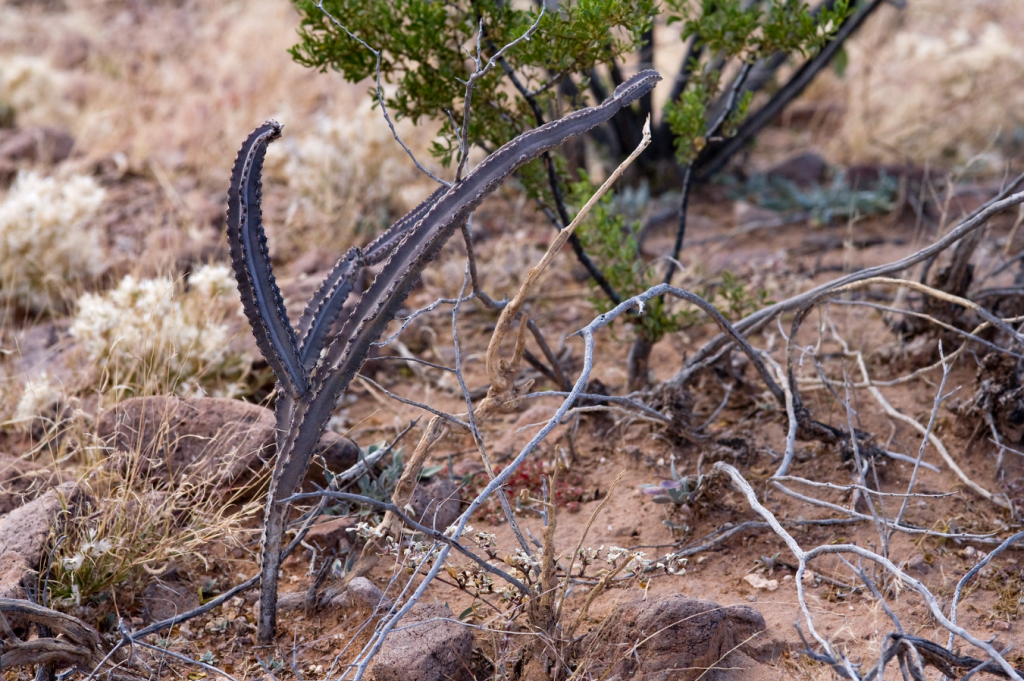By Liz Plazewski, June 2023
Location: Chihuahuan Desert, covering parts of northern Mexico and the southwestern United States.
Peniocereus greggii greggii, commonly known as Night Blooming Cereus, is a protected cacti native to the Chihuahuan Desert. This rare cactus is unassuming at first glance, and easily blends in with the branches of Creosote or Honey Mesquite that it frequently uses as nurse plants. In contrast with its plain vegetative features, one night a year in late spring to early summer the cactus produces a magnificent, showy, and fragrant flower. P. greggii greggii is quite elusive to catch in bloom, due to the short duration of the flower and, as its name suggests, it blooms after nightfall.


IAE Southwest Botanist Liz Plazewski assembled a small team to attempt to witness this natural wonder in action. The team periodically checked on a known population of Night Blooming Cereus in the daytime to track the flower bud development. Unfortunately, on their night trip to catch the bloom the target cacti had already moved on to its fruiting phase. But there’s always next year!

P. greggii greggii is listed as Endangered by the state of New Mexico, and Sensitive by the New Mexico Bureau of Land Management. While the species is widespread across the Chihuahuan Desert, it occurs very sparsely in its suitable habitats. Its two largest threats are herbicide treatments intended to restore grasslands and poaching by collectors.

Thank you to the Bureau of Land Management, the Conservation Corps of New Mexico, and the Southwest Conservation Corps for their support of our efforts to conserve native species and habitats in the Southwestern United States.
